The Beautiful Blonde from Bashful Bend
Brief Synopsis
Cast & Crew
Preston Sturges
Betty Grable
Cesar Romero
Rudy Vallee
Olga San Juan
Porter Hall
Film Details
Technical Specs

Synopsis
When Winifred "Freddie" Jones, a fiery saloon singer in the Old West city of Rimpau, catches her gambler boyfriend, Blackie Jobero, flirting with lovely French "entertainer" Roulette, she chases him into an upstairs bedroom at the saloon and accidentally shoots Judge Alfalfa J. O'Toole in the behind while aiming at Roulette. Freddie, a sharp-shooter since childhood, is arrested but convinces Sheriff Ambrose to let her return to the saloon and apologize to O'Toole, who is trying to explain to his shrewish wife Elvira why he was in one of the bedrooms. Just as she has almost charmed O'Toole into believing in her innocence, Blackie and Roulette enter, causing Freddie to grab Sheriff Ambrose's gun and, in a jealous rage, shoot the judge in the behind once again. In the confusion, she grabs her Mexican friend Conchita and runs to the train station, where Conchita steals some clothes and bags from a coffin. They board the train and assume the identities of the bag's owners, schoolteacher Hilda Swandumper and her Indian maid, Flat Feet. They soon reach Hilda's destination, Snake City, where Freddie, dressed in Hilda's conservative garb, is welcomed by the townspeople, including Julius Hingleman and his wife, their wealthy engineer son Charles, U.S. Marshal Jorgensen and the town troublemakers, led by Gus Basserman and his two sons. Later that day, Charlie takes Freddie sightseeing and kisses her in the church. The next day, back in Rimpau City, Blackie, who honestly loves Freddie despite his womanizing, begins to search for her. After overhearing a train conductor comment on the resemblance between his previous day's passengers and the two women described in a new wanted poster, Blackie buys a ticket to Snake City. Meanwhile, Freddie nervously begins her teaching duties, and, with aid of some fancy shooting, scares the Basserman boys into worshipful submission. When Blackie arrives in town, he questions Conchita and arranges to meet Freddie at the schoolroom that night. She arrives early to surprise him with a gun, but is surprised herself by Marshal Jorgensen, who wants her to prove that she is not escaped convict Freddie Jones. She convinces him that she cannot shoot, but as soon as Jorgensen leaves, Blackie emerges from the closet and declares that he will reveal her true identity if she refuses to leave with him. Freddie, who believes Blackie only wants the reward money, signals out the window to the Basserman boys, who knock him unconscious and hide him under Freddie's desk. Just then, Charlie enters, and after Freddie hustles him outside so that he cannot meet Blackie, they hear gunshots and run back to find the Basserman boys lying in a heap. Believing that the boys are dead, Freddie and Charlie call a meeting of the townspeople at the Hinglemans' house. They are mystified, however, by the disappearance of the boys's "corpses," and are at a loss when Gus demands to reclaim his boys and learn the identity of their killer. Furious at the snobbish treatment they receive, Gus and his men start a shootout with the townspeople. As Freddie shoots out a window, she is greeted by the Basserman boys, who reveal that Blackie forced them to fake their deaths. Meanwhile, Blackie joins Gus's forces until he learns that Freddie is on the opposing side. Gus then orders his men to hang Blackie and Charlie, who has been captured, in the barn loft. Freddie foils his plan, however, by expertly shooting her way to the barn, taking the boys to Gus and shooting the hanging ropes. Despite their fall to earth, Charlie and Blackie are not seriously injured, although Freddie is arrested by Jorgensen. At Freddie's subsequent trial in Rimpau City, Blackie begs O'Toole to marry them before sentencing her, and the judge seems moved by their love. When it becomes obvious that Blackie spent the previous evening dancing with Frenchwoman La Belle Bergere, however, the infuriated Freddie grabs Ambrose's gun and again shoots O'Toole in the behind.

Director

Preston Sturges
Cast
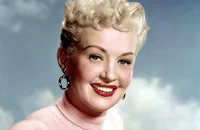
Betty Grable
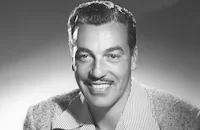
Cesar Romero

Rudy Vallee

Olga San Juan
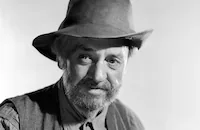
Porter Hall

Hugh Herbert
Alan Bridge
El Brendel

Sterling Holloway
Danny Jackson
Emory Parnell
Pati Behrs

Margaret Hamilton
Chris-pin Martin

J. Farrell Macdonald
Richard Hale
Esther Howard
Harry Hayden
Georgia Caine
Torben Meyer

Marie Windsor

Chester Conklin
Mary Monica Macdonald
Dewey Robinson
Richard Kean
Harry Tyler
Dudley Dickerson
Russell Simpson
Snub Pollard
Philo Mccullough
Tom Mcguire
George Melford
Louis Bacigalupi
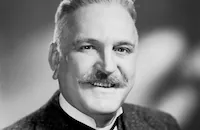
Frank Morgan
Blackie Whiteford
George Magrill
Frank Hagney
Abdullah Abbas
Sheldon Jett
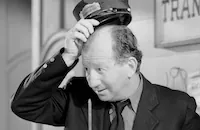
Hank Mann
Ray Spiker

Eddie Gribbon
Jack Stoney
Max Wagner
Frank Mills
Emil Sitka
Bob Adler
Kenneth Gibson
Arthur Ross
Douglas Gerrard
Rose Marie Iannone
Robert Milasch
Nestor Eristoff
John Sylvester

Gertrude Astor
Crew
Ken Darby
George W. Davis
Leonard Doss
William Eckhardt
Earl Felton
Robert Fritch
Don George
Gaston Glass
Mack Gordon
Eugene Grossman
Annie Fortesque Harrison
Renè Hubert
Harry Jackson
Natalie Kalmus
R. A. Klune
Charles Lemaire
Harry M. Leonard
Thomas Little
Cyril Mockridge
Josef Myrow
Lionel Newman
Ben Nye
Meta Orred
Stuart Reiss
Fred Sersen
Herbert Spencer
Preston Sturges
Preston Sturges
Lyle Wheeler

Film Details
Technical Specs

Quotes
Trivia
Notes
The working titles of this film were Teacher's Pet and The Blonde from Bashful Bend. The title of Earl Felton's original screen story was "The Lady from Laredo." Preston Sturges' onscreen credit reads: "Written, Directed and Produced by Preston Sturges." According to Hollywood Reporter news items, the film originally was scheduled to begin filming in September 1947, but was "temporarily shelved" in October 1947. According to modern sources, the delay was necessitated by financial concerns, as studio production chief Darryl F. Zanuck was reluctant to make a high-budget Technicolor film at the time. During the interim, Sturges wrote and directed Unfaithfully Yours as his first production for Twentieth Century-Fox (see below). On a December 29, 1947 screenplay draft for The Beautiful Blonde from Bashful Bend, contained in the Twentieth Century-Fox Produced Scripts Collection, located at the UCLA Arts-Special Library, Sturges wrote the following note: "It is my habit, when writing a play, to cast the parts as, in my mind, each character makes his first appearance. Occasionally a stranger walks in and I am uneasy about his looks and the sound of his voice, but usually as he pauses in the doorway I recognize an old friend whose talents I admire and about whose fitness for the part I have no doubts." Although Betty Grable had already been announced as the film's star, Sturges' note reveals that he envisioned June Haver in the part of "Freddie."
The file on the film in the MPAA/PCA Collection at the AMPAS Library reveals that the PCA judged the December 29, 1947 draft to contain "a number of unacceptable elements which could not be approved in the finished picture." PCA head Joseph I. Breen cautioned the studio to take especial care with the women's costumes and noted: "This screenplay contains entirely too much dialogue and action which concerns itself-in a quite blunt and pointed way-with sex." Breen advised eliminating suggestions that "Judge Alfalfa J. O'Toole" was in the saloon's hotel room in order to have an affair, or that he was in an illicit relationship with "Conchita." The September 23, 1948 draft was approved, although Breen again advised the studio to be mindful of the camera angles when photographing the actresses.
According to modern sources, the film's ending, in which Judge O'Toole was shot for the third time, was filmed by another director at the insistence of Zanuck, who did not like Sturges' original ending. A Hollywood Reporter news item, however, stated that Sturges "had slated shooting on an added scene," for which Marie Windsor had been added to the cast. The film, which was Sturges' first Technicolor production, was his last American film. Sturges directed only one more picture, the 1955 French film Les carnets du Major Thompson, although he did receive story credits on the 1956 film The Birds and the Bees and the 1958 picture Rock-a-Bye Baby, both of which were remakes of earlier Sturges productions.

Miscellaneous Notes
Released in United States 1974
Released in United States June 16, 1989
Released in United States on Video May 25, 1989
Released in United States Summer June 1949
Shown at Film Forum in New York City June 16, 1989.
Released in United States 1974 (Shown at FILMEX: Los Angeles International Film Exposition (The Preston Sturges Movie Marathon) March 28 - April 9, 1974)
Released in United States on Video May 25, 1989
Released in United States Summer June 1949
Released in United States June 16, 1989 (Shown at Film Forum in New York City June 16, 1989.)











